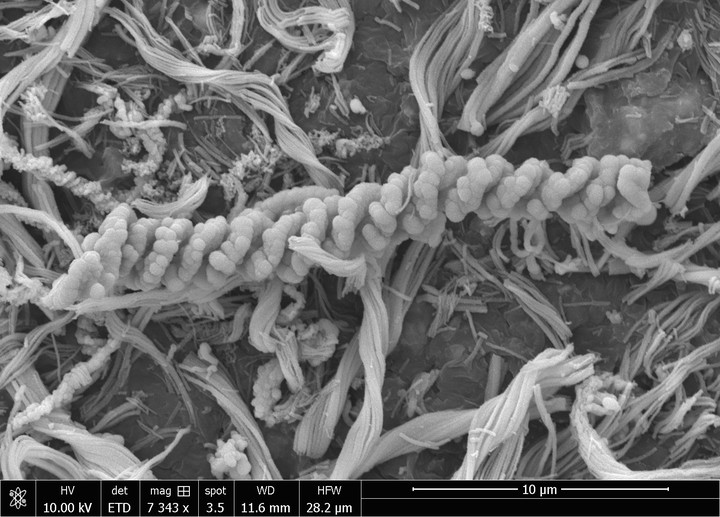Iron-Fueled Life in the Continental Subsurface: Deep Mine Microbial Observatory, South Dakota, USA
 Twisted iron-oxide stalk produced by iron oxidizing Gallionella bacteria at DeMMO.
Twisted iron-oxide stalk produced by iron oxidizing Gallionella bacteria at DeMMO.
Abstract
Iron-bearing minerals are key components of the Earth’s crust and potentially critical energy sources for subsurface microbial life. The Deep Mine Microbial Observatory (DeMMO) is situated in a range of iron-rich lithologies, and fracture fluids here reach concentrations as high as 8.84 mg/liter. Iron cycling is likely an important process, given the high concentrations of iron in fracture fluids and detection of putative iron-cycling taxa via marker gene surveys. However, a previous metagenomic survey detected no iron cycling potential at two DeMMO localities. Here, we revisited the potential for iron cycling at DeMMO using a new metagenomic data set including all DeMMO sites and FeGenie, a new annotation pipeline that is optimized for the detection of iron cycling genes. We annotated functional genes from whole metagenomic assemblies and metagenome-assembled genomes and characterized putative iron cycling pathways and taxa in the context of local geochemical conditions and available metabolic energy estimated from thermodynamic models. We reannotated previous metagenomic data, revealing iron cycling potential that was previously missed. Across both metagenomic data sets, we found that not only is there genetic potential for iron cycling at DeMMO, but also, iron is likely an important source of energy across the system. In response to the dramatic differences we observed between annotation approaches, we recommend the use of optimized pipelines where the detection of iron cycling genes is a major goal.
Supplementary code.